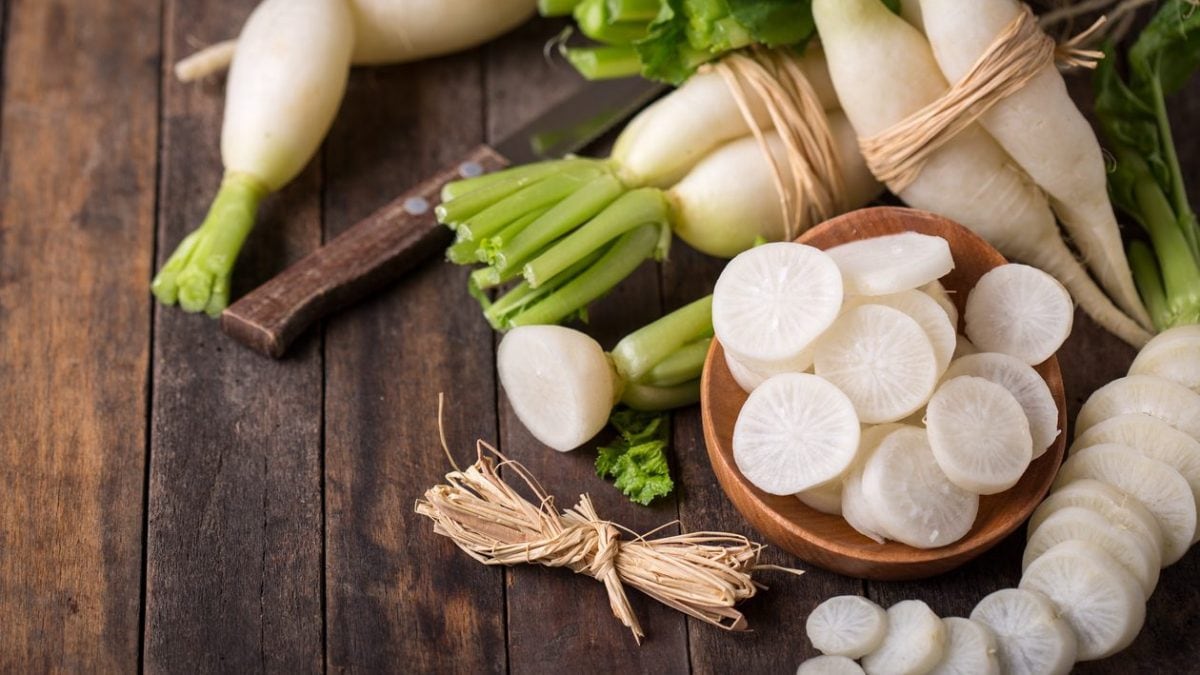
Daikon radishes are very popular in Asian cuisine, both for their flavor and their potential health benefits. This vegetable, belonging to the Cruciferae family, is also known as winter radish, oriental radish or white radish. There are different species of daikon in the world: it can take on red, purple and green hues, the shape can be cylindrical, spherical or oblong. The most common species is the aokubi daikon: it is found in Japan and has the appearance of a large carrot.
Properties of Daikon
Daikon grows all over the world and is usually harvested in the colder months of the year: it has a delicate and slightly sweet flavor, which becomes spicier when fully ripe. In addition to being used for human food, daikon radish can be used in animal feed or to extract oil for use in the production of cosmetics. It is a low-calorie food with many nutritional properties: for example, it is rich in vitamin C (300 grams of daikon radish meet almost 124% of the daily value required for vitamin C), but it also contains a good level of B vitamins. It is an excellent source of folate, a very important antioxidant, and fiber, which helps natural intestinal regularity.

The Benefits of Daikon
Daikon has many beneficial properties, with just 15 calories per 100 grams. Here are the details:
- It has many detoxifying, diuretic, draining properties and helps reduce swelling: for this reason it is recommended for those who suffer from water retention and cellulite;
- It has anti-inflammatory properties, thanks to antioxidant polyphenols such as quercetin and ferulic acid, which have powerful immunostimulating properties;
- It acts as a mucolytic: it is able to thin mucus and is therefore a good ally in case of coughs and colds;
- Thanks to the quantity of fibers it contains, it has a high satiating power and is therefore useful for those following low-calorie diets;
- Rich in vitamins, mineral salts, antioxidants and fibre, this vegetable helps prevent pathologies such as heart disease, diabetes and neurodegenerative disorders.

How is Daikon Used in Cooking?
Daikon is a widely used ingredient in various oriental cuisines, such as Korean, Chinese, Vietnamese or Indian, but especially in Japanese cuisine, where it is an essential element of many typical dishes. In Korea, daikon is used, together with other vegetables, to make the famous kimchi . Like ginger, it can be found in fresh version but also in dried version (to be used more as a spice than as an actual ingredient).

Fresh daikon can be eaten raw, grated or flaked: it is often baked together with other vegetables, such as potatoes, or steamed, in order to preserve all its properties. It is ideal as a side dish for fish dishes, to give freshness to cream soups and soups of various types, but it can also be au gratin. It is also excellent to include raw in salads, carpaccio and tartare with an exotic flavor, but also roasted and then seasoned with aromatic herbs and extra virgin olive oil. Finally, try fried daikon: cook it exactly as you do with potatoes and you will be very satisfied.
;Resize,width=767;)
